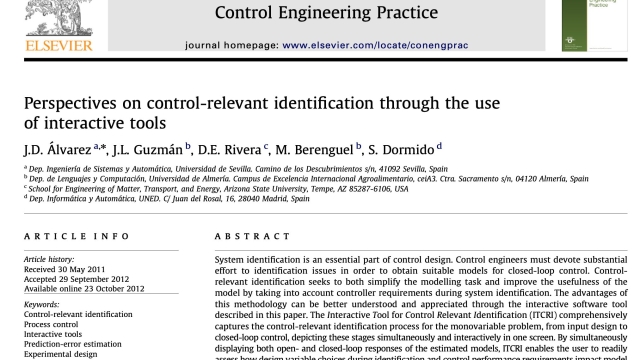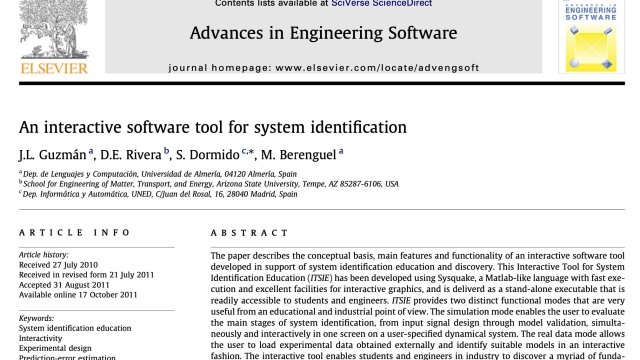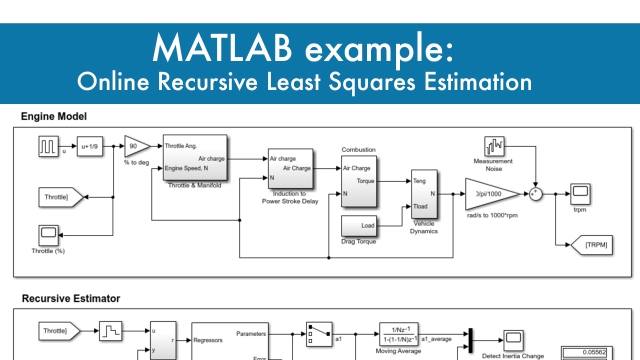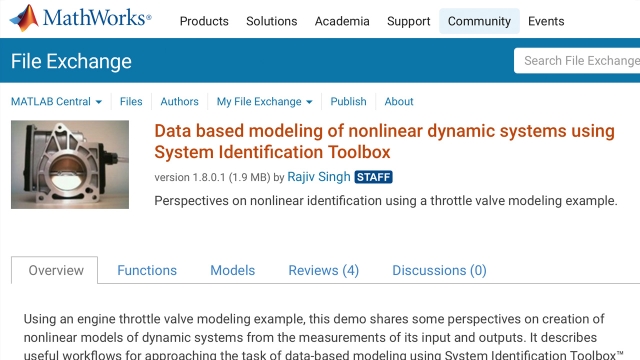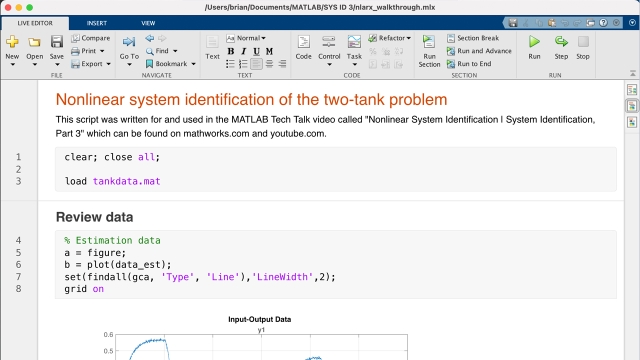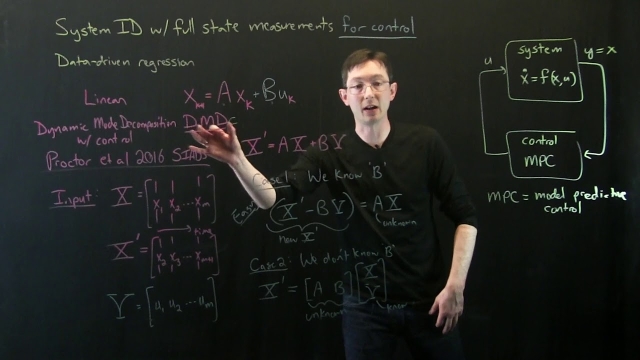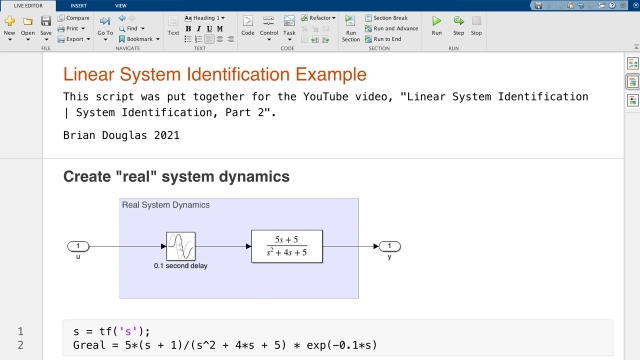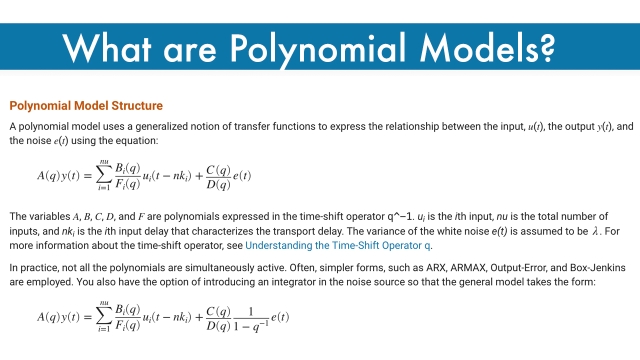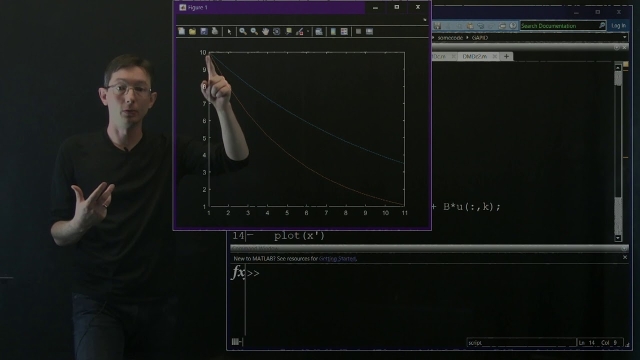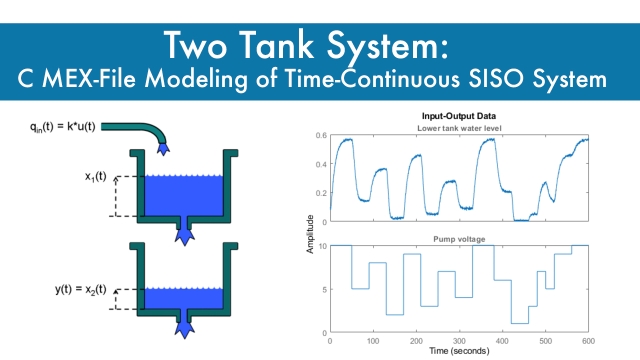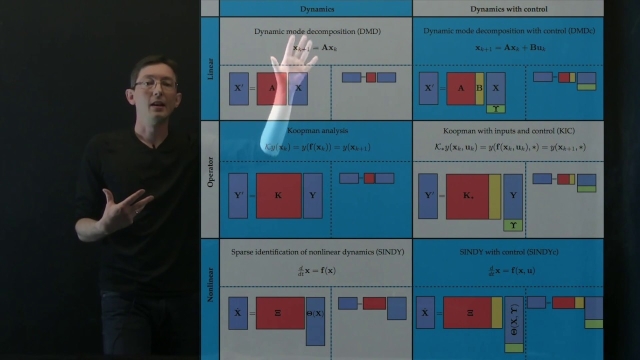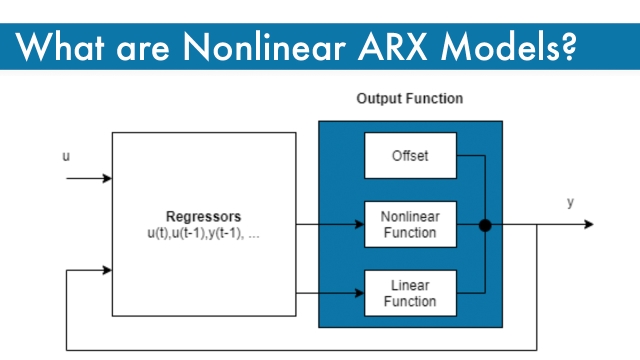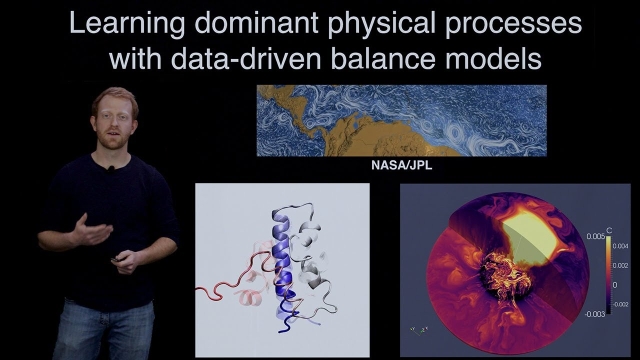The field of system identification uses statistical methods to build mathematical models of dynamical systems from measured data. System identification also includes the optimal design of experiments for efficiently generating informative data for fitting such models as well as model reduction. A common approach is to start from measurements of the behavior of the system and the external influences (inputs to the system) and try to determine a mathematical relation between them without going into many details of what is actually happening inside the system; this approach is called system identification.
Topic
System Identification
This topic includes the following resources and journeys:
Type
Experience
Scope
Perspectives on Control-Relevant Identification Through the Use of Interacti...
This paper presents a control-relevant identification methodology through an intuitive interactive tool called "Interactive Tool for Control Relevant Identification (ITCRI)". ITCRI...
See MoreSystem Identification: Koopman with Control
This lecture provides an overview of the use of modern Koopman spectral theory for nonlinear control. In particular, we develop control in a coordinate system defined by eigenfunctions of...
See MoreManuscript about ITISE: an Interactive Software Tool for System Identificati...
The paper describes the conceptual basis, main features and functionality of an interactive software tool developed in support of system identification education and discovery.
This...
See MoreMATLAB Example: Online Recursive Least Squares Estimation
This example shows how to implement an online recursive least squares estimator. You estimate a nonlinear model of an internal combustion engine and use recursive least squares to detect...
See MoreData based modeling of nonlinear dynamic systems using System Identification...
Using an engine throttle valve modeling example, this demo shares some perspectives on creation of nonlinear models of dynamic systems from the measurements of its input and outputs. It...
See MoreSystem Identification: Full-State Models with Control
This lecture provides an overview of modern data-driven regression methods for linear and nonlinear system identification, based on the dynamic mode decomposition (DMD), Koopman theory, and...
See MoreMATLAB scripts for "Nonlinear System Identification | System Identification,...
This Github repo contains the data files and MATLAB scripts that were used in "Nonlinear System Identification | System Identification, Part 3".
See MoreSystem Identification: Dynamic Mode Decomposition with Control
This lecture provides an overview of dynamic mode decomposition with control (DMDc) for full-state system identification. DMDc is a least-squares regression technique based on the singular...
See MoreMATLAB Scripts for video "Linear System Identification | System Identificati...
This Github repo contains the data files and MATLAB scripts that were used in the MATLAB Tech Talk video "Linear System Identification | System Identification, Part 2"
See MoreWhat are Polynomial Models?
This Mathworks page provides an overview of polynomial models.
See MoreSystem Identification: DMD Control Example
This lecture gives a Matlab example of dynamic mode decomposition with control (DMDc) for full-state system identification.
See MoreTwo Tank System: C MEX-File Modeling of Time-Continuous SISO System
This MATLAB example shows how to perform IDNLGREY modeling based on C MEX model files. It uses a simple system where nonlinear state space modeling really pays off.
See MoreSystem Identification: Regression Models
This lecture provides an overview of modern data-driven regression methods for linear and nonlinear system identification, based on the dynamic mode decomposition (DMD), Koopman theory, and...
See MoreWhat are Nonlinear ARX Models?
This Mathworks page provides an overview of Nonlinear ARX Models.Nonlinear ARX models extend the linear ARX models to the nonlinear case. The structure of these models enables you to model...
See MoreIdentifying Dominant Balance Physics from Data - Jared Callaham
This video illustrates a new algorithm to identify local dominant physical balance relations from multiscale spatiotemporal data.
See More
